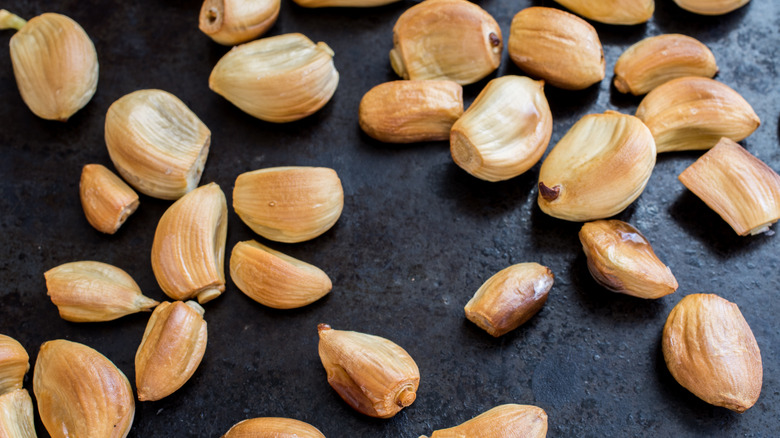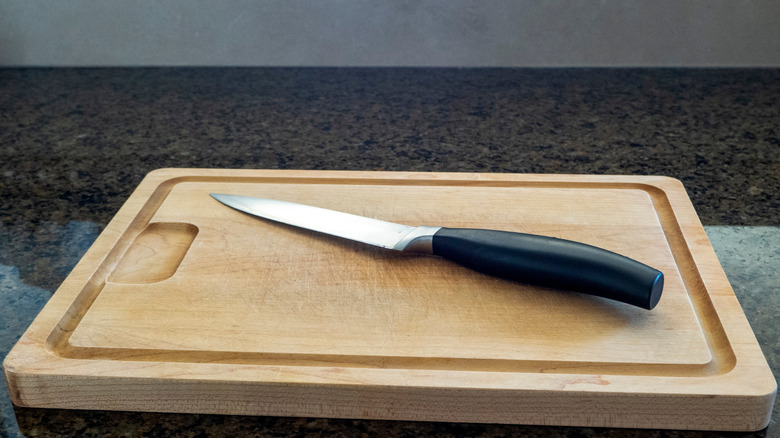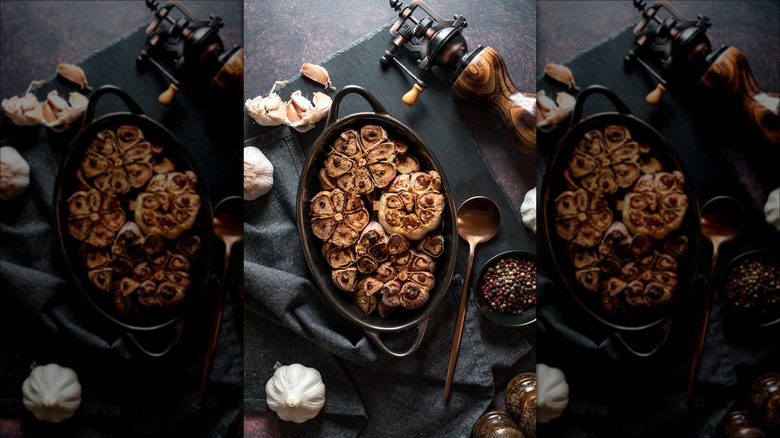The Paring Knife Tip For Knowing When Your Garlic Is Roasted
If you're oven-roasting garlic at home, you're hoping for creamy, caramelized cloves that pop right out of their skins and burst with sweet, irresistible garlicky flavor. But if you're roasting a whole head of garlic or even individual cloves, how can you tell when the garlic is fully roasted? You don't want an undercooked, half-raw stinky clove — nobody wants to eat that. But you also don't want to wait too long and burn the cloves beyond use.
Turn to your kitchen knives to help you with this one: Specifically, your paring knife is a perfect size and shape to cleverly and carefully check the doneness of your roasted garlic cloves. Simply gently stick the tip of the paring knife into the garlic clove. If the texture is smooth and the paring knife easily slides in and out, your garlic is perfectly roasted. If not, give it some more time in the oven and check again in a bit, about every five to ten minutes.
Why a paring knife works best
You may be thinking of how you could just as easily grab a fork from the silverware drawer to check your roasted garlic, but consider the repercussions. The tongs of a fork will pierce the garlic too much, creating multiple holes for the precious oils to escape. Or, you could have trouble removing the fork and end up hacking away at your head of garlic until it's a mushy mess.
Paring knives, on the other hand, are an extremely versatile tool in the kitchen — they can even score your meat. A paring knife is small, with a sharper blade that's narrower than other knives, making it the most undisruptive choice of kitchen utensil. Paring knives are often used in baking to check the doneness of cakes, as well. But unlike when checking a cake, the knife may or may not come out clean after checking the garlic clove. As long as you feel the clove is soft, that's a good indication it's done roasting.
Using your paring knife to enjoy roasted garlic
Most roasted garlic recipes call for a cooking time range of 40 minutes to an hour at 400 degrees Fahrenheit. However, after you hit the 30-minute mark of roasting, that's the time to take the garlic heads out of the oven briefly and bust out the paring knife to check them. Go for a clove in the center of the head of garlic for the closest accuracy.
Now that your garlic is caramelized and creamy, it's time to enjoy it! If you just want to enjoy the garlic as is, you can turn to your paring knife again. Gently push the garlic cloves out of the head of garlic once cooled and use the paring knife to spread it on a toasted baguette or cracker. Combining roasted garlic with a bit of mayo, mustard, or hummus is also a fantastic way to liven up these classic condiments and dips. And by using your paring knife to scoop up the garlic, you've made cleanup one step easier.


